Punti di interesse
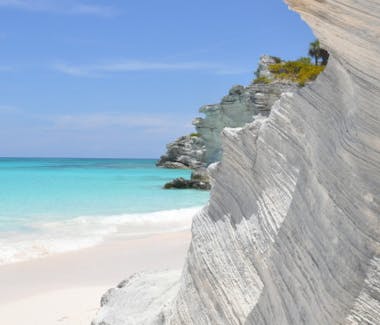
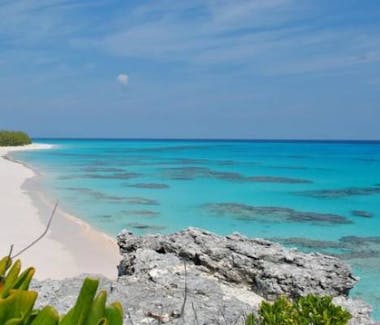
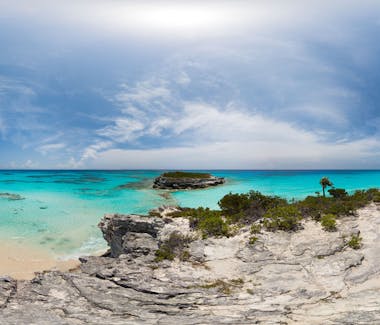
Queens Highway, South Eleuthera, The Bahamas
Lighthouse Beach
Lighthouse Beach is known for its endless miles of unspoiled, soft, powdery, blush-rose sand beach, considered to be one of the most magnificent beaches in The Islands of The Bahamas, and some say it even rivals Harbour Island's Pink Sand Beach. This hidden gem teeters at the southernmost point of Eleuthera, on the Atlantic side of the island. It is nestled in the bosom of a massive rock structure behind some sand dunes. It is very unique because you can play in two bodies of water almost simultaneously, the Exuma Sound (Caribbean Sea) and the Atlantic Ocean. The beach on the Caribbean Sea has several hidden caves and offers good shelling and great snorkeling just a walk off the beach. The Atlantic beach offers great vistas, including Half Moon Cay.
It is also a great place to sunbathe or pack a picnic basket and spend an entire romantic afternoon or sunset stroll with your significant other. You will have the seclusion of an enclosed cove, as well as the adventure of climbing up to the old lighthouse located on a dramatic limestone promontory overlooking the ocean. It you want a photo taken in the lighthouse, be sure to stand at the window and it will be naturally framed. If you decide to camp out for the night, the rock structure provides great protection from the elements.
The path to Lighthouse Beach is somewhat difficult, but the payoff is well worth it.
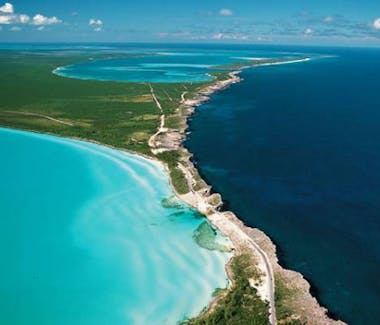
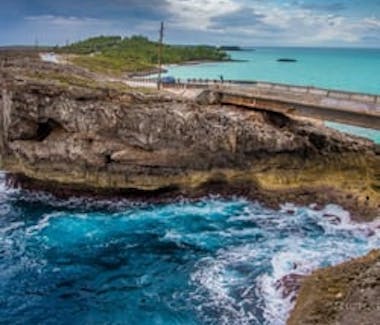
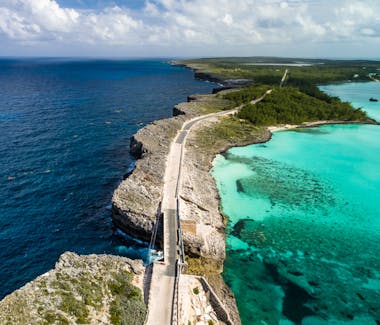
Eleuthera, Queen's Highway, North Eleuthera, The Bahamas
Glass Window Bridge
One of nature's true wonders, The Glass Window Bridge will certainly leave you breathless as you drink in the magnificent panoramic view. It is one of the few places on earth where you can compare the rich blue waters of the Atlantic Ocean on one side of the road and the calm turquoise-green waters of the Exuma Sound (Caribbean Sea) on the other side, separated by a strip of rock just 30 feet wide.TheBridge is about two miles east of Upper Bogue and joins Gregory Town and Lower Bogue at the narrowest point on the island. The land here is high on both sides, falling away abruptly to nearly sea level, almost dividing the island in two. A bridge on its topside connects the northern and southern points of Eleuthera by a paved road.
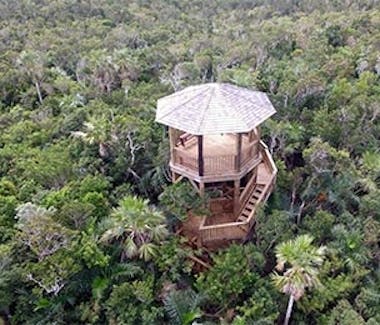
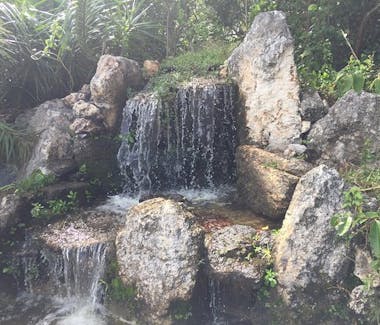
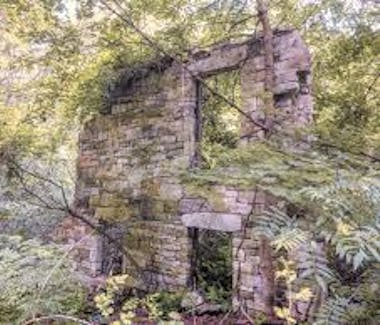
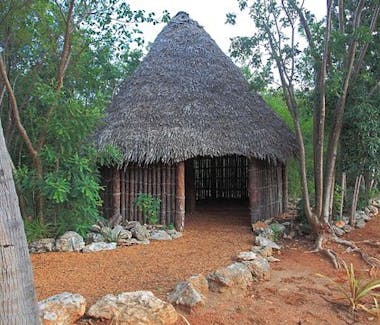
Banks Rooad, Governor's Harbour, Eleuthera, Bahamas
Leon Levy Native Plant Preserve
The Leon Levy Native Plant Preserve is located in Governor’s Harbour, Eleuthera, the Preserve is operated by the Bahamas National Trust and funded by the Leon Levy Foundation. It was developed by Shelby White, trustee of the Foundation, in honour of her late husband, Leon Levy. The Preserve will be a living part of Bahamian history. It is the first national park on the island of Eleuthera. It is an environmental educational centre as well as a facility for the propagation of native plants and trees.
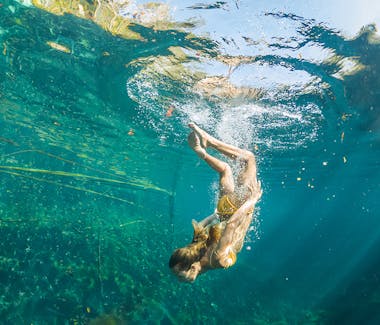
Preacher's Cave, The Bahamas
Sapphire Blue Hole
This blue hole is located just minutes away from Preacher's Cave on the northern part of Eleuthera.
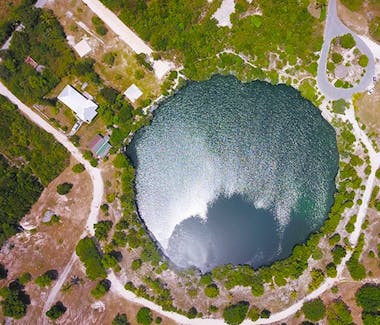
Rock Sound, The Bahamas
Ocean Hole
Ocean Hole is a large inland salt water lake. It is referred to as a bottomless blue hole, has a rich Eco-system, and is home to lots of tropical fish waiting to show off how well they can jump for bits of bread. Known to be connected to the Atlantic Ocean, this body of water rises and recedes with the oceanic tides.
The Ocean Hole Park which adjoins the blue hole was designated as a protected area in 1970 and has undergone various forms of infrastructure, which now surrounds the landmark, including a miniature stone wall and beautification of the area with coconut and sea grape trees
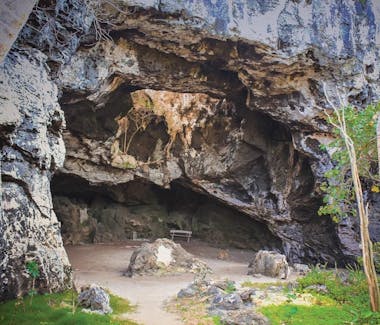
Preacher's Cave, The Bahamas
Preacher's Cave
Along with the island of Eleuthera, Preacher's Cave was discovered in the 1600s by Captain William Sayles. The placard at the entrance of the cave says “William Sayle shipwrecked at Devil Backbone found refuge here. Sermons held 100 years.” The cave is located approximately 10 miles from North Eleuthera Airport and is on the north shores of Eleuthera adjoining a long and broad sweeping beach called Tay Bay Beach.
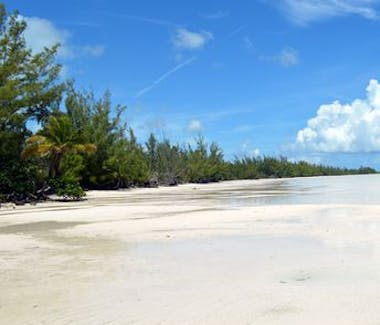
Ten Bay Beach, The Bahamas
Ten Bay Beach
Ten Bay Beach is located on the Caribbean Sea side of Eleuthera Island, so the waters of this beach are warm and tranquil. The beach is the perfect spot to bring a picnic and spend the day. The shores of the beach are lined with large casuarina trees and palm trees which provide shade from the hot sun.
The calm protected water of the bay is warm, and the water is shallow for several meters off the shore, making it a great place for swimming. There are rocky cliffs at either end of the bay which provide protection for fish, making it an excellent spot for snorkeling.
Ten Bay Beach in Eleuthera is 3.7 miles south of Palmetto Point crossroads. A blue and yellow road sign on your right will say Beach Access. Drive down the dirt road for about half a mile and there is parking along the side of the road.
This beach is fairly secluded, and you will often be the only person on the beach. If you stay all day you will be rewarded with a beautiful sunset as this beach is west facing.
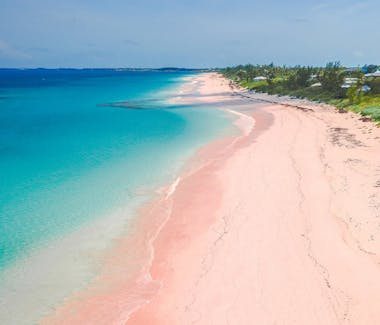
Pink Sands Beach, The Bahamas
Pink Sands Beach
PINK SAND BEACH
Harbour Island is most renowned for its beautiful Pink Sand Beach, located along its eastern Atlantic Ocean side. It almost seems endless, stretching for some three plus miles, and it is 50 to 100 feet wide. Considered one of the very best beaches in The Islands of The Bahamas, it was featured in The Travel Channel's World's Best Beaches segment in March 2005 and named 'Best Sand Beach'. It was one of 10 beaches worldwide to be included in the program.
The almost indescribable pale pink color of the sand comes from microscopic coral insects, known as Foraminifera, which have a bright pink or red shell full of holes through which it extends pseudopodia, footings that it uses to attach itself and feed. Foraminifera are among the most abundant single cell organisms in the ocean and play a significant role in the environment. These animals live on the underside of reefs, like the nearby Devil's Backbone, on the sea floors, beneath rocks, and in caves. After the insect dies, the wave action crushes the bodies and washes the remains ashore and mixes it in with the sand and bits of coral. The pink stands out more in the wet sand at the water's edge. Unlike other parts of the world, the sand here is always cool, so you can walk about freely with bare feet.
